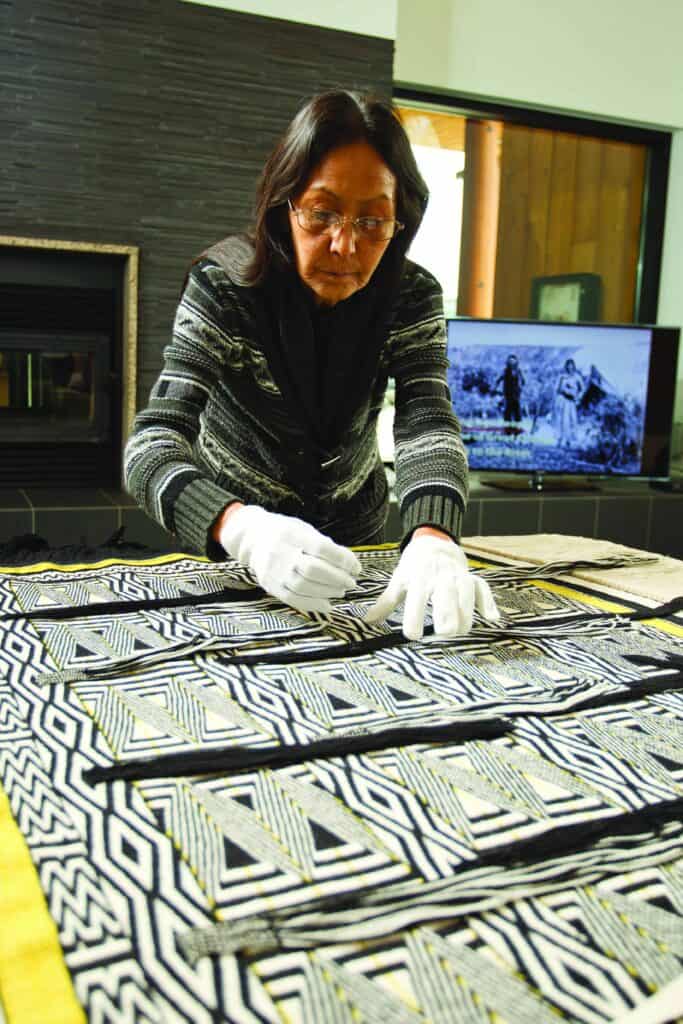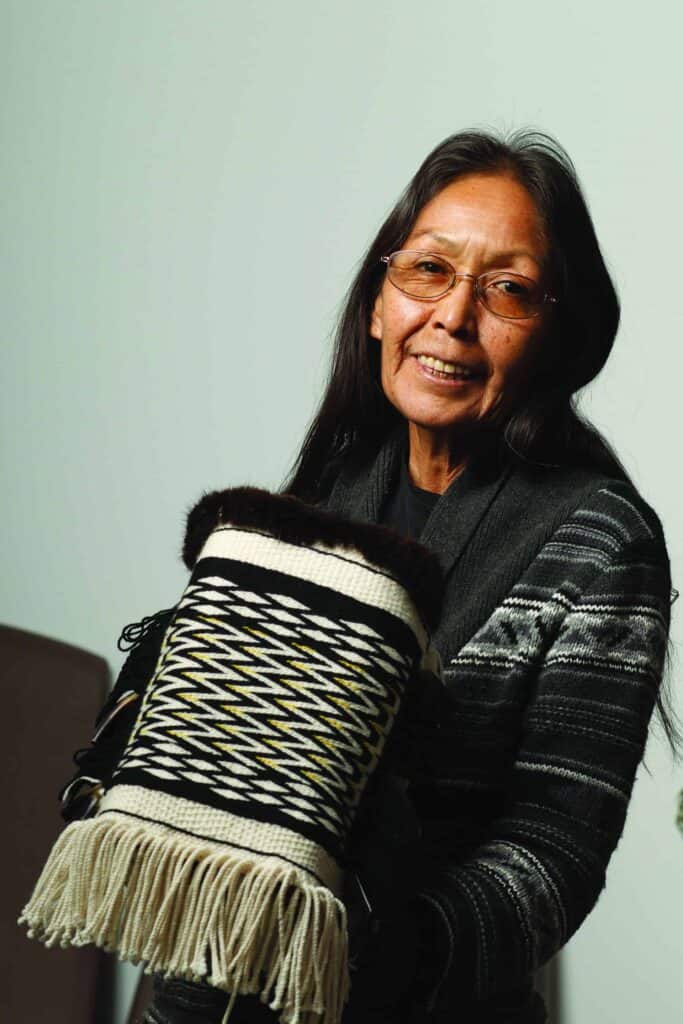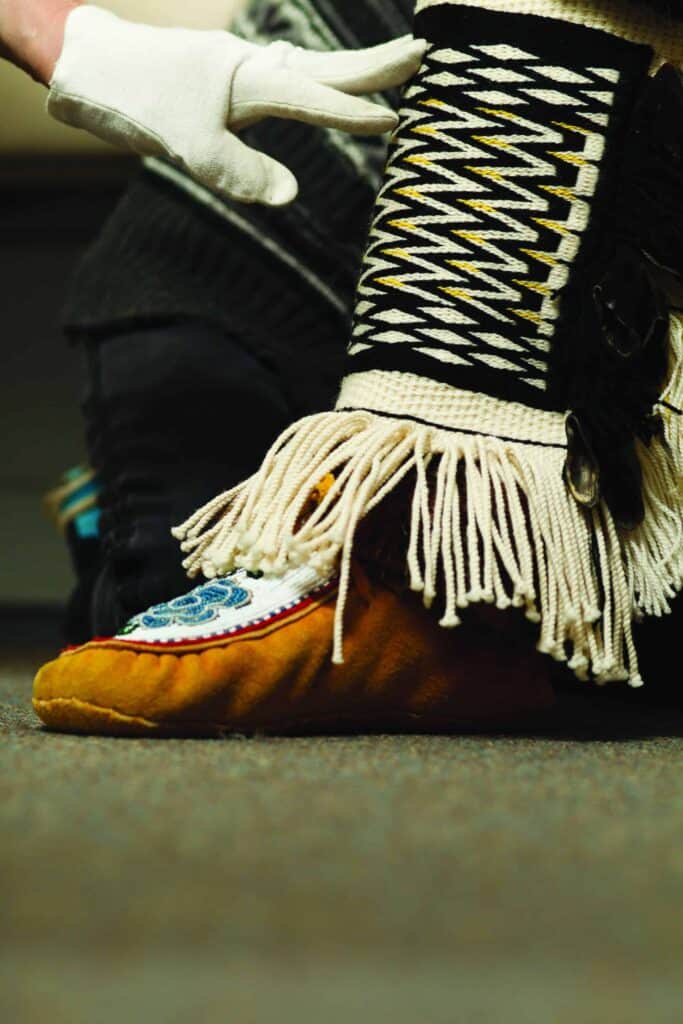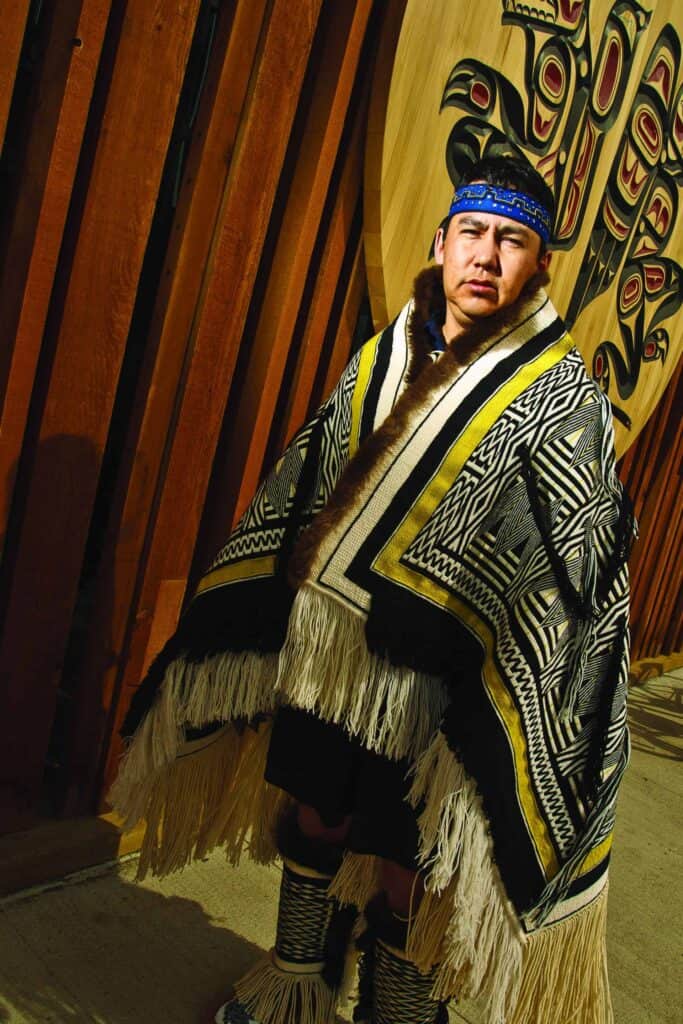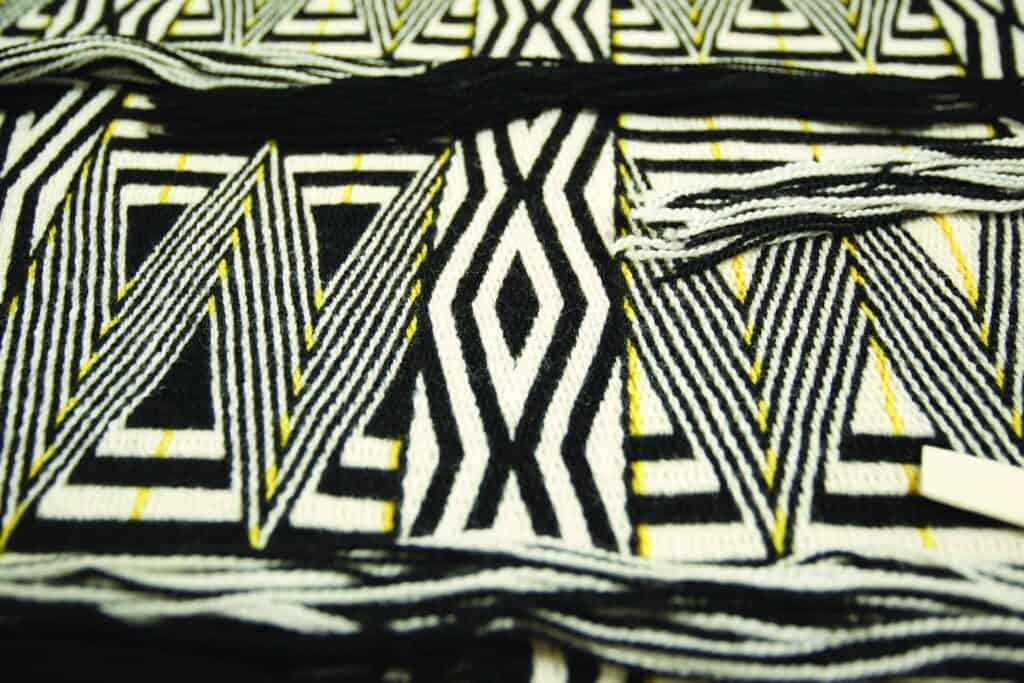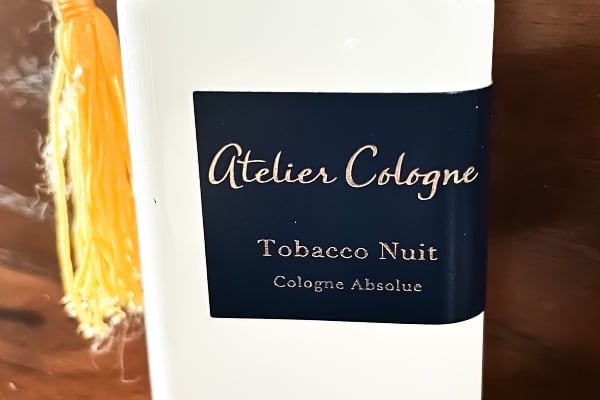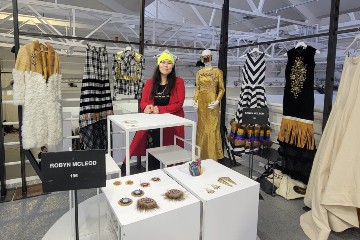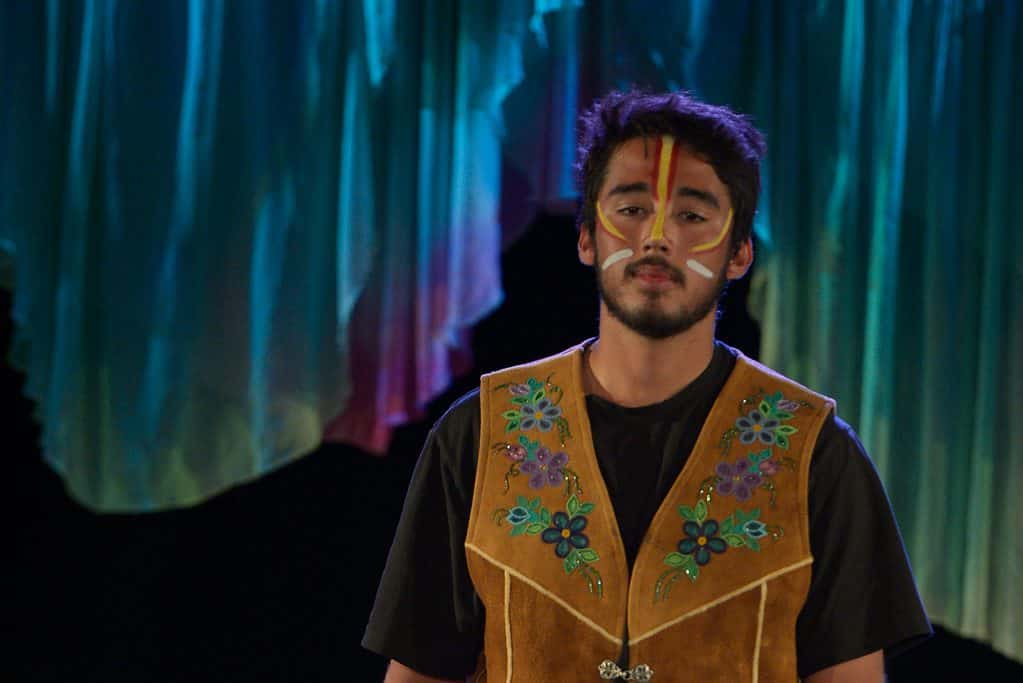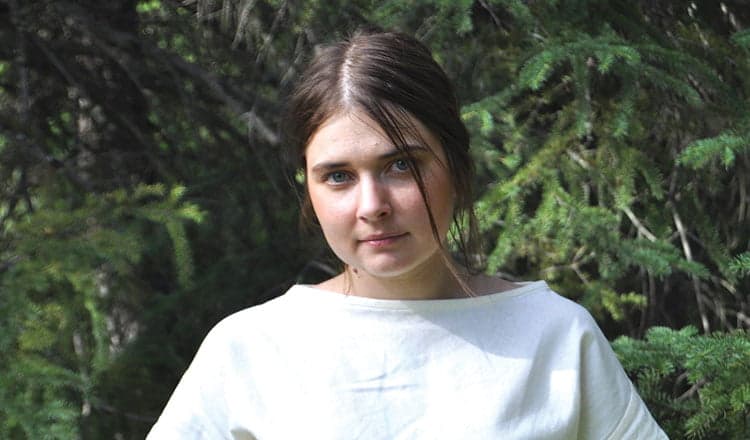“A woman needs to have an art form,” says Tlingit Tutchone master weaver Ann Smith.
And she feels a responsibility to pass on the art of weaving to the next generation of First Nations women – which is exactly what she and Alaskan Tlingit Chilkat master weaver Clarissa Rizel will do during the Adäka Cultural Festival.
The festival runs June 21 to 27 at the Kwanlin Dun Cultural Centre in Whitehorse, and Chilkat and Ravenstail weaving will be part of the traditional arts celebrated.
The long-time friends Smith and Rizel will share their art form at the Weavers Gathering, holding workshops for up to 20 First Nations women.
Smith, who is also a former Kwanlin Dun Chief, current board member with Northern Expressions Cultural Society, elder, and international weaving teacher, has been weaving since she fell in love with the art form during a Yukon College course more than 20 years ago.
Smith learned the Ravenstail weaving style, characterized by vivid geometric designs, by studying techniques and patterns from robes in museums. The robes themselves became teachers.
“I was not as lucky as the old timers,” says Smith. “When I learned, the past weavers were gone; our garments and culture had been outlawed. The value of robes, which used to be equal to the value of a totem pole, had decreased to $25. Women needed to make money to feed their families, so they needed to do other work instead of weaving.”
Full Chilkat and Ravenstail regalia, worn in ceremony and dancing, can take between 10 months and two years to complete.
Interestingly, the largest collection of robes that Smith has heard of is in Russia, where 11 such items reside after Europeans came to Alaska, bought the robes, then wore them in European court.
Grandmother to seven children and great-grandmother to one, Smith feels peaceful, calm and relaxed inside when she is weaving.
“When a robe is finished it does feel like a baby is born,” she says. “Once the robe leaves me and goes on to be danced, it comes alive, as does the person dancing.”
It gives Smith joy to see her son Sean dance in regalia she has created.
“Seeing it danced creates a full circle for the weaver,” she says. “It makes others happy inside to see a young person dancing today in full regalia, it’s like going back to the old ways. It gives me hope for the next generation — to enjoy, to feel satisfaction and not worry so much for the young. We need healing. And it is a healing transformation to see the person in regalia change. We’re giving a gift to people by passing down this knowledge.”
Smith’s robes are in art collections across Canada. Her three-piece regalia – comprised of a robe, leggings and an apron – is on display at the Ottawa Aboriginal Affairs and Northern Development office and is being flown to Whitehorse for the Adäka festival.
Sean will dance Smith’s robe called “Grandmother’s Time” in the festival and Rizel will bring two robes, including a child’s, to dance.
Smith says at least four robes will be danced in the opening ceremonies of the Adäka festival, helping the healing, sharing of tradition and transformation to continue.
“The opportunity is here and now – and it is amazing,” she says.
The Adäka Cultural Festival takes place at the Kwanlin Dun Cultural Centre in Whitehorse from June 21 to 27. To learn more about the Weavers Gathering, call (867) 667-7698; email [email protected] or go to www.Adaka.ca.

